MAYBE BABY: POPULATION POLITICS PART 1
The ONS reported in October 2021 that “the total fertility rate for England and Wales in 2020 fell to 1.58 children per woman, the lowest since records began in 1938.” Contrary to predictions of a baby boom, conceptions during the first COVID lockdown fell and didn’t begin to pick up until after restrictions were eased.
What happens to fertility rates post-COVID remains to be seen. As a student of politics, it’s a subject that I’ve always been curious about. To what extent, if at all, should the government seek to influence the birth rate? Before we consider the answer to this very tricky question, let’s look at how the maternity* rate in England and Wales has changed since 2010.
* Conception statistics include pregnancies that result in one or more live- or stillbirths (a maternity) or a legal abortion under the Abortion Act 1967. They do not include miscarriages or illegal abortions. For more information on the data, see the ONS workbook.
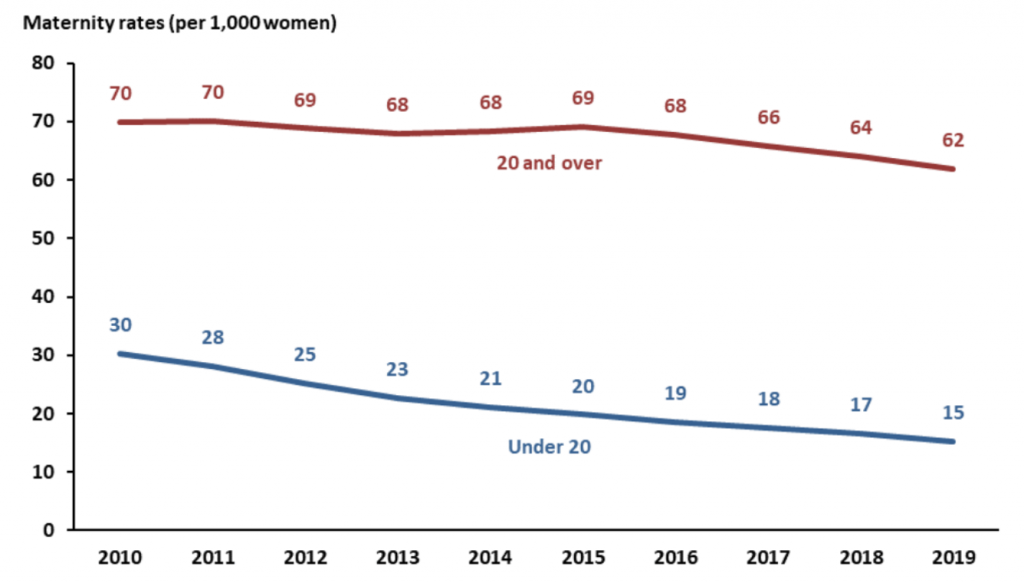
During the 2010s, the maternity rate for under 20s halved. I had an idea that it had gone down, but I didn’t realise it had fallen quite as much as that. For women aged 20 and over, the maternity rate remained steady up to 2015, before falling by around 10% over the next four years.
The tables below show the local authorities with highest and lowest maternity rates for under 20s in England and Wales. I have estimated the figures for 18- and 19-year-olds using the published numbers for under 18s. The figures in the second table may be affected by an increase in students during the decade. Nevertheless, there are parts of London where the under 20 maternity rate is below five per 1,000 women. These changes have been driven by both a fall in the conception rates and an increase in the abortion percentage.
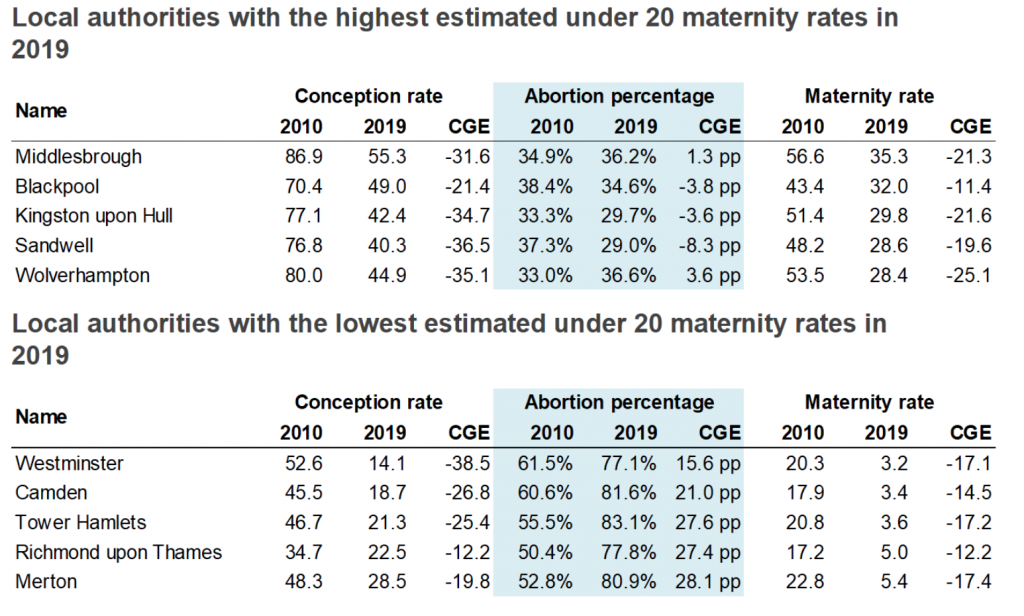
The decrease in the under 20 maternity rate has brought England and Wales closer to the rates recorded in the rest of Europe. As to why this change has occurred, one piece of academic research suggests that the fall in teenage pregnancies was not as a result of England’s Teenage Pregnancy Strategy. It has been suggested that growth of the internet and smartphones has contributed to reduced sexual activity among teenagers.
Before looking at what’s happened with over 20s, it’s worth noting that there isn’t much of a relationship between the two age groups. One might expect the maternity rate for over 20s to hold up more in areas where maternity rate for under 20s has fallen the most. But if that is a factor, it’s not obvious from the data.
The tables below show the local authorities with highest and lowest maternity rates for those aged 20 and over in England and Wales. Interestingly, London has three authorities in each table. Harrow is one of only seven authorities that has recorded an increased maternity rate since 2010 (the others being Bolton, Bedford, East Yorkshire, Havering, Cheshire East, and Blackpool).
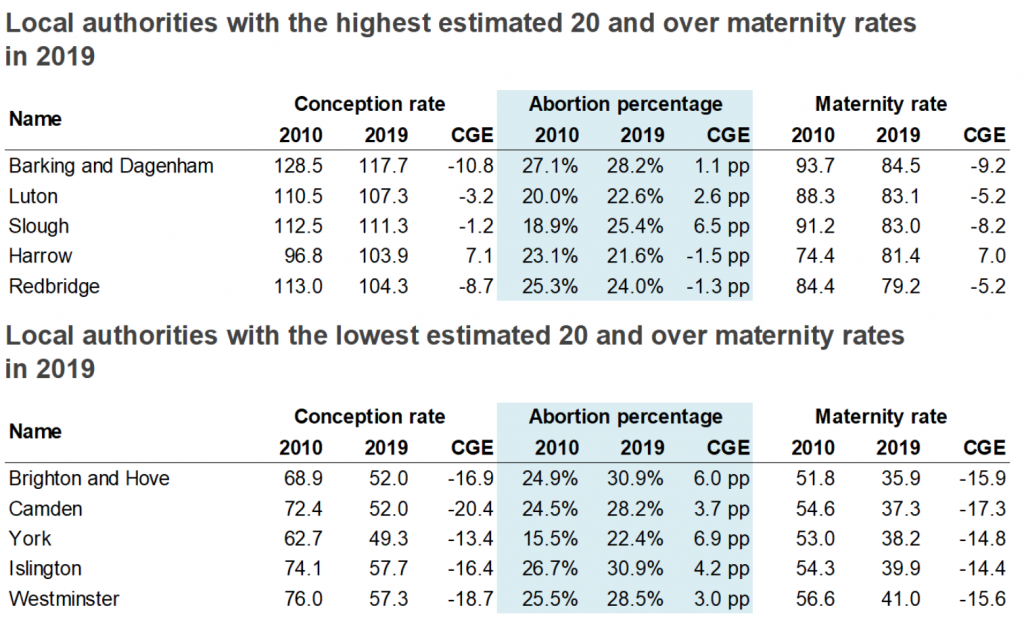
The charts below show how local authority conception (rather than maternity) rates changed between 2010 and 2016 and between 2016 and 2019 compared with how their populations have changed in that time. For the first six years of the decade, there was quite a strong relationship between conception rates and population change. Where the population increased the most, the conception rates fell the most. Parts of London such Lambeth and Southwark had especially large falls in their conception rates. Some areas such as Bedford and Havering had sizeable increases in conception rates despite increases in their population.
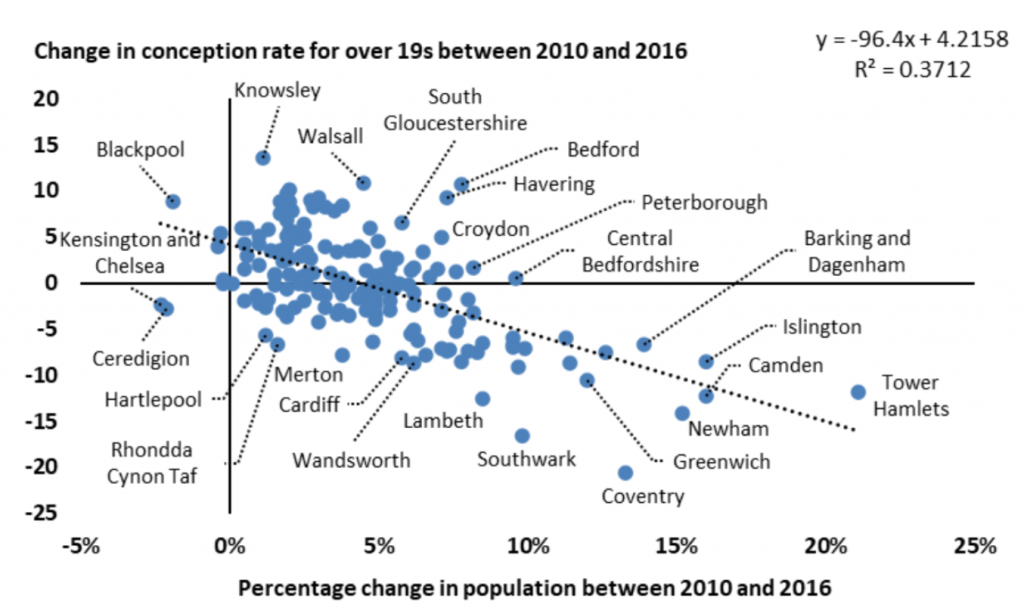
The relationship between the two variables was weaker between 2016 and 2019. Conception rates in Bexley, Torbay, Brighton and Hove, and Lewisham fell by more than eight conceptions per 1,000 women despite relatively small population increases. By contrast, Conwy, Denbighshire, Doncaster, and Bracknell Forest recorded increases in their conception rates.
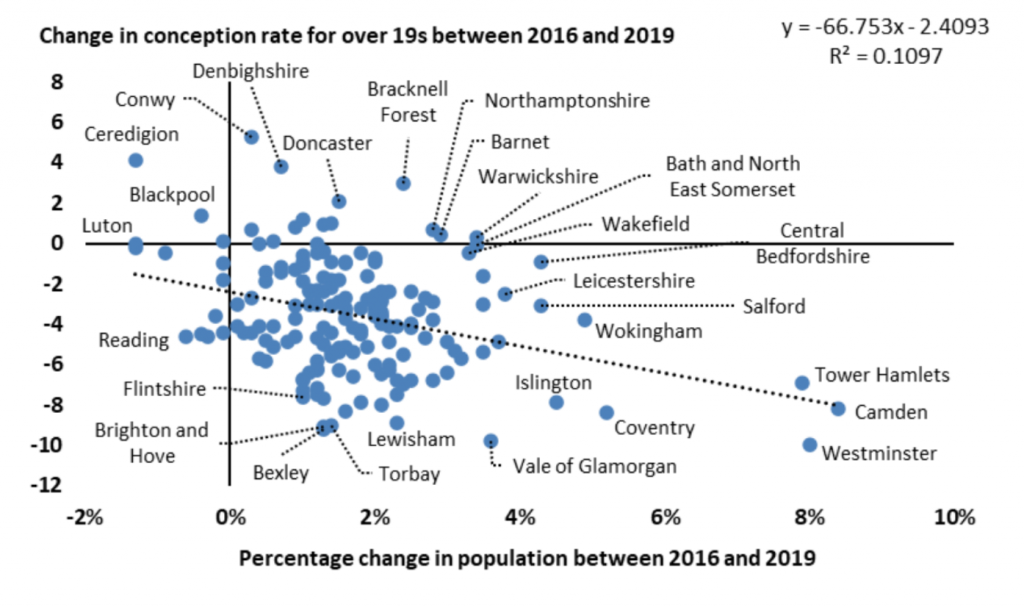
Conception rates may have fallen due to increased housing costs resulting from population increases. The chart below shows that, for changes in England between 2016 and 2019, there is a weak positive correlation between conception rate changes and increases in dwellings. The negative correlation between conception rates and population changes may be mitigated to some extent through the building of new homes. However, no such relationship was found for 2010 to 2016. It’s worth noting the presence of Torbay as an outlier (a larger fall in the conception rate between 2016 and 2019 than would be expected given the population change). It may be that second home ownership is having an effect in such locations.
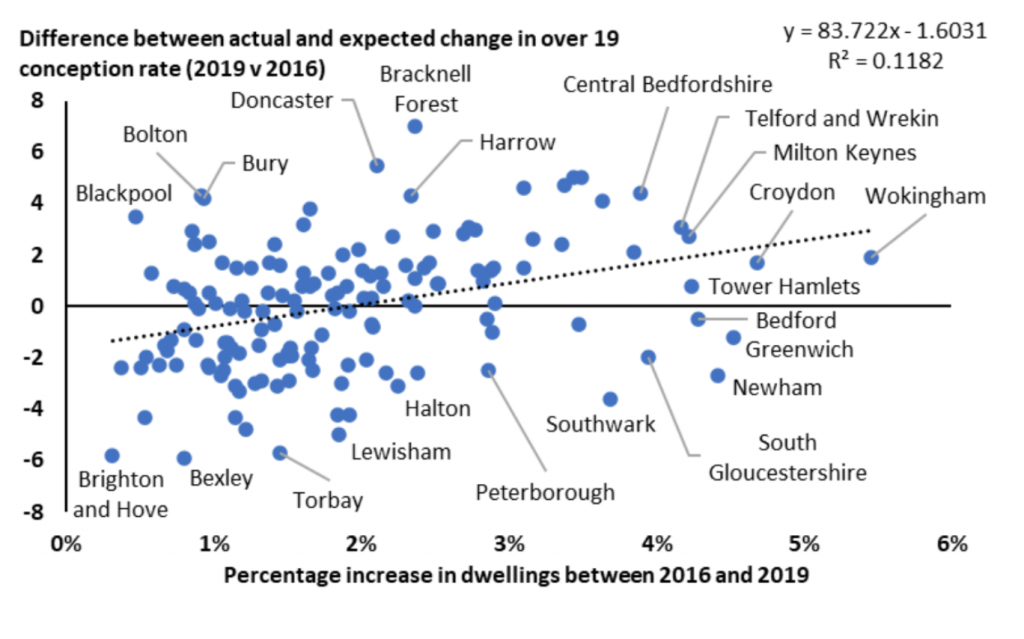
The reason for showing conception rates rather than maternity rates is that increases in the abortion percentage were smaller in areas with larger population increases. The chart below shows that in five local authorities – Harrow, Brent, Waltham Forest, Redbridge, and Tower Hamlets, the abortion percentage fell during the decade. Perhaps population changes are affecting the abortion percentage, but if so, it’s being masked by a trend in the opposite direction.
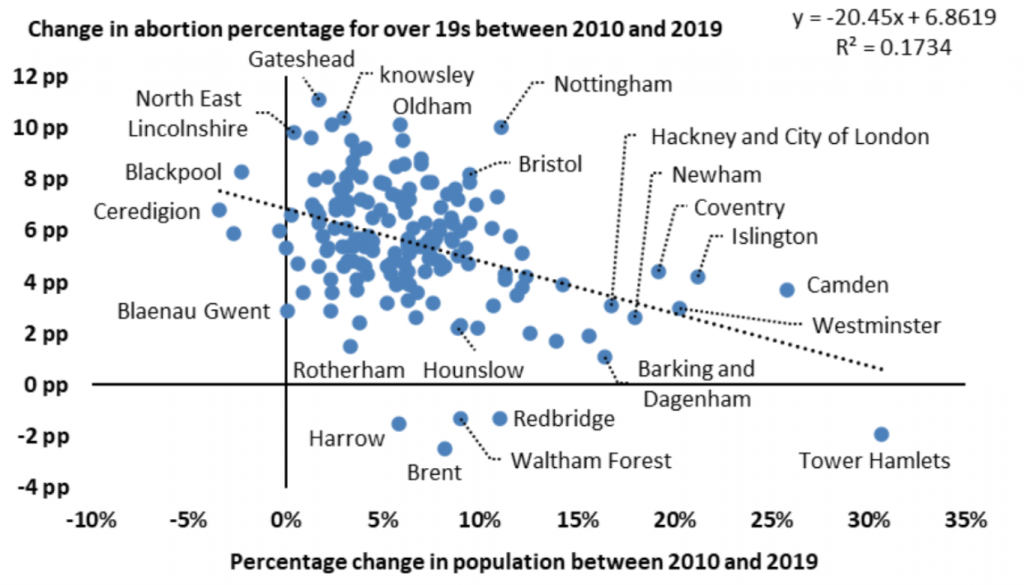
Correlation does not necessarily mean that there is a causative link. Nevertheless, academic research found evidence of reduced fertility rates among private renters due to house price increases between 1995 and 2008. Furthermore, the percentage of households in England that rent privately increased from 13.9% in 2008 to 20.3% in 2016-17, before falling to 18.7% in 2019-20.
I think it is probable that population and housing cost increases have contributed to the decline in conception rates. This suggests that at least some and, perhaps, quite a lot of the fall in fertility rates is involuntary. That is, people are not having children or having fewer children because of financial considerations. In the Part 2, I shall examine the case for government intervention.
Tom Leveson Gower
Tom Leveson Gower posts on PB as TLG86
Data sources: Office for National Statistics: Conceptions in England and Wales and Mid-Year Population Estimates.
GOV.UK: Dwelling stock statistics (Table 100) and New housing statistics (Table 253)
Support the site New Year appeal